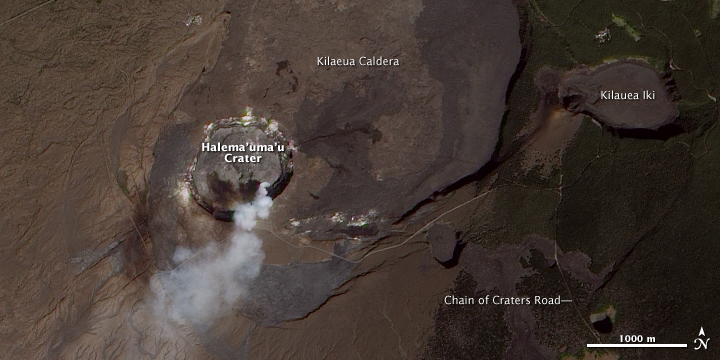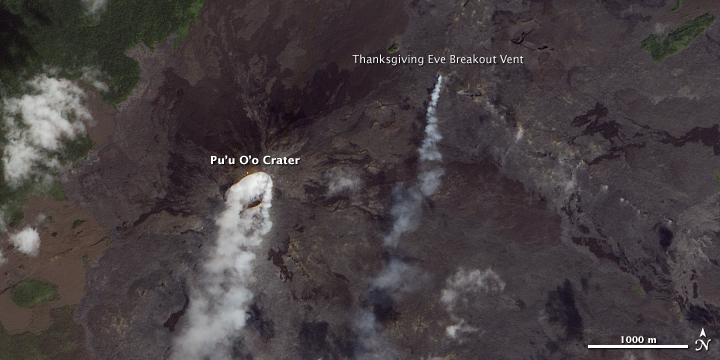



Multiple plumes blew toward the south-southwest from Kilauea as the Advanced Land Imager (ALI) on NASA’s Earth Observing-1 satellite flew overhead on December 11, 2009. These true-color images show a wide-area view (top) and two close-ups indicated by white outlines: Halema‘uma‘u Crater (middle) and Pu‘u O‘o Crater (bottom). The largest and thickest plume appears at Pu‘u O‘o Crater.
At the Halema‘uma‘u Crater, a plume emanates from a relatively small location on the southeastern crater rim. The plume’s light color suggests a high proportion of water vapor, although some ash might mix with steam in this plume.
The Pu‘u O‘o Crater is completely obscured by a volcanic plume, which appears to arise from the entire crater. Northeast of this crater, another plume billows from a pinpoint of activity, the Thanksgiving Eve Breakout Vent. (This breakout vent formed on the eve of Thanksgiving in 2007.) Like the plume from Halema‘uma‘u Crater, these plumes appear light in color, and likely contain more steam than ash.
According to bulletins issued by the Hawaiian Volcano Observatory on December 11 and 12, 2009, a deep pit in Halema‘uma‘u Crater held two openings from which a glow (likely from magma) appeared. A network of tilt meters recording inflation and deflation at Kilauea indicated inflation on the north flank of Pu‘u O‘o although the bulletin stated that deflation/inflation events are of uncertain magnitude.
One of Hawaii’s most active volcanoes, Kilauea is a shield volcano with a low, broad shape resembling an ancient warrior shield. It overlaps a neighboring shield volcano, Mauna Loa, to the west.
NASA image created by Jesse Allen, using EO-1 ALI data provided courtesy of the NASA EO-1 team. Caption by Michon Scott.